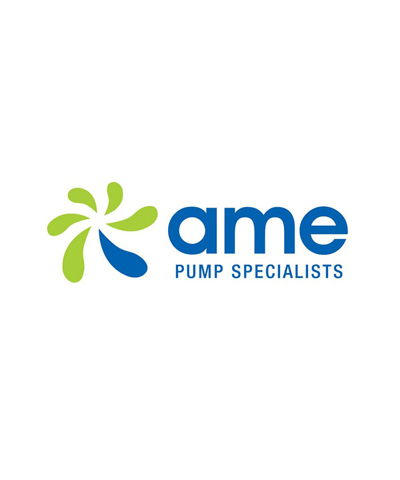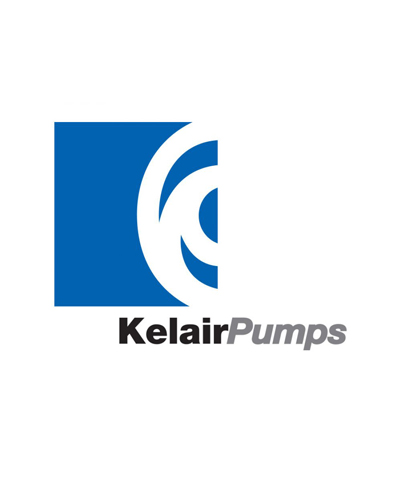By Joe Evans, Pump Ed 101
It has been my observation that the vast majority of new electric motor failures can be attributed to improper selection, installation and start up. Although factory defects do occur, they are rare and tend to be quite apparent when a failed motor is inspected. The following is a short guide to proper selection, installation and start up of new and replacement centrifugal pump motors.
Selection
New Installations
Many of us assume that a new pump will be mated to the proper motor at the factory but this is not always the case. More and more commercial installations tend to be WYE connected and utilise 208V rather than the 230 or 460V* offered by Delta transformers. Also, the pump manufacturer will often use a portion of the motor’s service factor to meet the required head and flow. Both of these conditions can lead to a factory supplied motor that is incorrect for the application.
A motor’s service factor is defined as a multiplier that, when applied to the rated horsepower, provides the maximum permissible loading at rated voltage. Most pump motors are supplied with a 1.15 service factor and, in an ideal situation, a 10HP model can be loaded to 11.5HP.
Standard single phase motors are designed to operate on 230VAC while three phase models are usually wound for both 230 and 460VAC. Both will operate at 208VAC but, in doing so, their service factor is reduced to 1.0.
In the case of a centrifugal pump, the service factor’s primary purpose is to protect the motor during low voltage conditions. If that service factor is already being consumed by 208 volt operation, none remains to protect against a further voltage drop. This condition is further compromised when the pump loads the motor to its full load capacity.
In fact, some pumps actually use a portion of the service factor during normal operation (in order to lower initial cost) and, if this condition exists, 208 volt operation will eventually cause the motor to fail. Use of the service factor in 230V and 460V applications will also shorten motor life if low voltage conditions are common. If this could be the case, always order the pump with the next higher HP motor.
If the power source is a WYE transformer, it is always best to purchase a pump with a motor wound specifically for 208VAC since these motors maintain a full service factor. If a 208 volt motor is unavailable a common remedy is to select the next higher horsepower 230 volt model.
You will often hear that you should not oversize a motor because “under loading” will reduce its efficiency. Actually, the exact opposite is true. The typical induction motor reaches its maximum efficiency between 65 and 85 per cent load, and efficiency remains relatively flat between 55 and 90 per cent. When loading drops below 50 per cent efficiency drops rapidly but, the amount of energy wasted is very low because the total power used is also very low. So, if you want to get the most efficiency out of a motor, use a 100HP model to drive that 75HP load. You may also double its life.
Replacement motors
When replacing a centrifugal pump motor, it is important to select one that has the same voltage and service factor. This is especially true in the case of small single phase motors where the service factor may be quite large. For example, a typical 3/4HP jet pump with a 1.45 service factor actually has almost 1.1HP available. If it were replaced with a standard 3/4HP, 1.15 SF motor it would overload and eventually fail. Again, if a motor with the proper service factor is unavailable, select the next higher horsepower model.
Installation

If a complete pump or replacement motor (especially large frame motors) has been in storage for an extended period of time, an extensive inspection should be performed before placing it into service. Minimally this should include a visual inspection, a megger test, and a bearing inspection. It is usually best to regrease the bearings during inspection.
Single phase motors
Wire the motor leads as shown in the wiring diagram on the nameplate. Fractional HP, dual voltage motors often incorporate a switch for voltage selection while some still require removal or rerouting of a jumper. In either case, make sure the proper voltage is selected. Running a single phase motor on the wrong voltage will quickly degrade the winding insulation. Some single phase motors are also bidirectional so ensure that the leads are connected for proper rotation.
Rotation (CW/CCW) is determined by viewing from the rear (non-shaft end) of the motor.
Thermal protection is provided internally on most fractional HP motors. A bimetal switch embedded in the stator windings interrupts power if the windings overheat. Larger motors, usually 3 HP and above, are not internally protected. These units require a combination starter/overload relay for protection. Both components must be capable of accommodating the service factor load of the motor. Installation without this device will void the motor warranty.
Three phase motors
Wire the motor leads as shown in the wiring diagram on the nameplate. Standard three phase motors are usually dual voltage and incorporate six or nine leads. The operating voltage is dependent upon the configuration of these leads, and stator winding damage can occur if they are misconnected. Double check the diagram once you have completed the connections.
Three phase motors cannot be prewired for a particular rotation and there is a 50/50 chance that it will be correct. If rotation is incorrect it can be corrected at start up. It is also a good idea to check the stator winding resistance’s among the three leads (L1/L2, L1/L3, L2/L3). The resistance in ohms should be the same for each combination.
All three phase motors require a combination starter/overload relay. In addition to overload protection, the IEC versions of this device also protect against phase loss and phase imbalance. Make sure that the contactor and overload relay are matched to the motor’s service factor amperage for the operating voltage selected.
Start up
Single phase motors
Before starting the motor, use a voltmeter to measure the source voltage and ensure that it is within normal tolerances. A 115V source should measure between 115 and 125V and a 230V source should measure between 230 and 240V. A 208V source should be between 208 and 215V. If lower measurements are detected the problem must be located and corrected before placing the motor in service.
Leave the voltmeter connected and place a clamp-on ammeter over one of the motor power leads. Start the pump and observe that the amp draw at various flow rates. It should not exceed the nameplate amperage of the motor. If the amp draw is higher than nameplate amperage, observe the source voltage while the pump is running. If the source voltage has dropped more than two per cent, the wiring to the starter may be too small or poor connections may exist. If the voltage has not dropped more than two per cent, check all wiring connections between the starter and the motor. In any event, locate the source of the problem and correct it before leaving the pump in service.
Three phase motors
As before, use a voltmeter to measure the source voltage. In the case of three phase power, voltage must be measured between L1/L2, L1/L3 and L2/L3. The voltage should be the same for all three pairs. An unbalanced line voltage greater than one per cent can cause motor overheating. A 230V source should measure between 220 and 240V, and a 460V source should measure between 440 and 480V. A 208V source should measure between 200 and 215V. If voltage is not within these ranges, the problem must be located and corrected.
Briefly start the motor and observe rotation. If it is not rotating in the proper direction interchange any two of the motor leads at the starter terminal block. After correct rotation has been established, use a clamp-on ammeter to measure and record the current draw of each of the three legs. These measurements should not exceed the nameplate amperage of the motor. Stop the motor and use the following procedure to calculate current imbalance.
- Add the three measured current values
- Divide the sum by three to obtain average current
- Determine which of the three values is furthermost from the average
- Compute the difference between this value and the average
- Divide the difference by the average and multiply the result by 100 to get a percentage
If current imbalance is two per cent or less, the leads should be left as connected. If imbalance is more than two per cent roll the leads (in the same direction) one position at the starter and remeasure. Roll them again and measure the final hook up. Select the hook up with the least current imbalance.
Current imbalance should not exceed five per cent. If it cannot be corrected by rolling the leads, its source must be located and corrected. If, when rolling the leads, the leg with the greatest imbalance remains on the same starter terminal, the imbalance is due to the power source. If, however, the leg with the greatest imbalance moves with the same motor lead, the problem is on the motor side of the starter. Often it is due to a bad connection but, occasionally, a faulty stator winding is the problem.
Joe Evans has been in the pumps industry since 1986 and is passionate about the sharing of knowledge within the industry. To read more of his insights into the world of pumping, visit www.pumped101.com www.pumped101.com.
*Voltages mentioned are standard American voltages. Standard voltages in Australia are: single phase – 240v/1p/50hz, and three phase – 415v/3p/50hz.
















